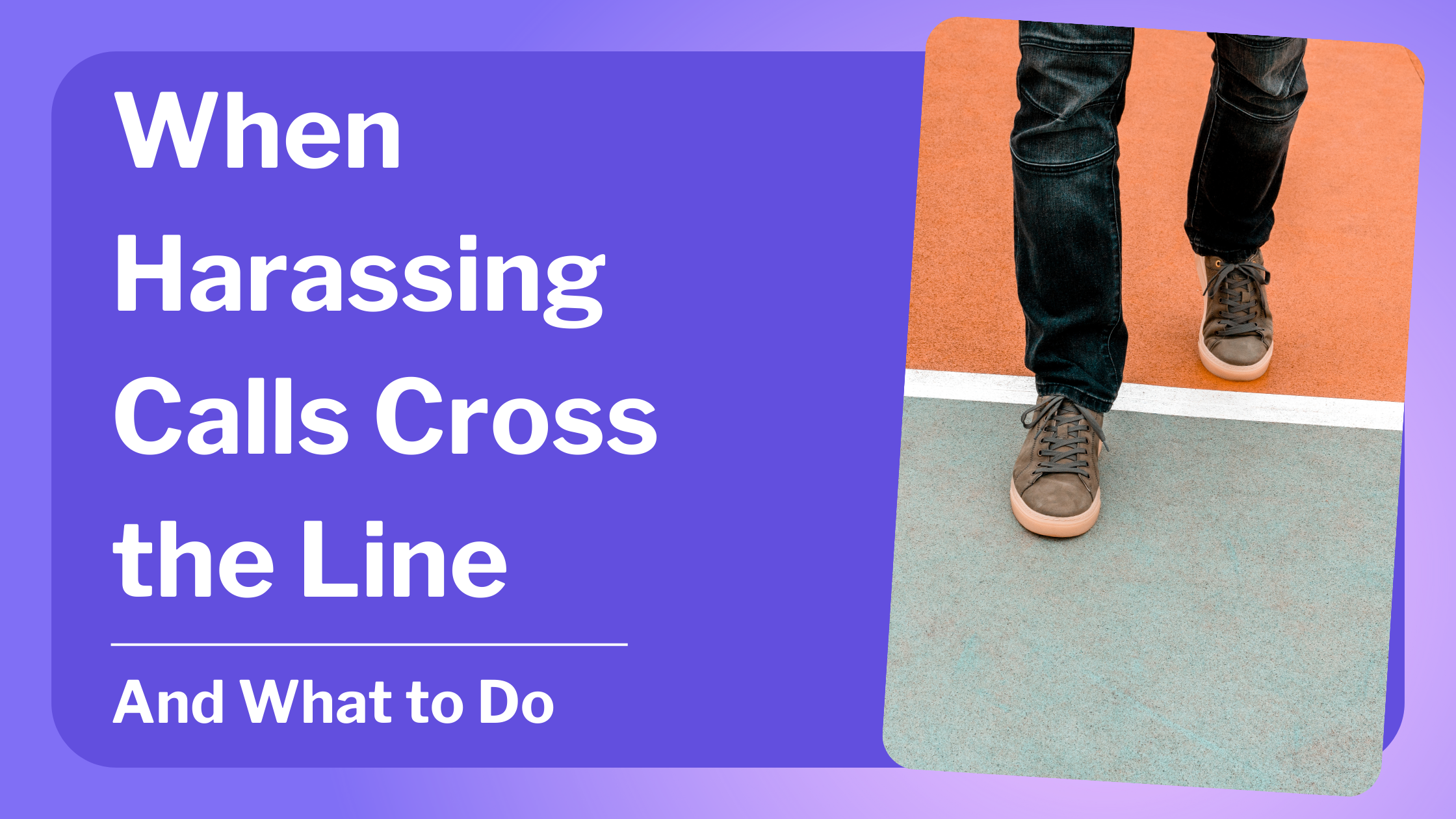
Published 09/18/25
More Than Just Annoying Calls
One unwanted call is irritating. Ten in a row feels invasive. And when it keeps happening, it stops being an inconvenience and becomes harassment.
Phone harassment isn’t always loud or threatening—it can be quiet, persistent, and draining. Whether it’s an ex who won’t stop calling, a scammer targeting you daily, or a “No Caller ID” stalker, the impact is real.
The good news? You’re not powerless. Here’s how to recognize when calls have crossed the line—and what you can do to take back control.
The Signs of Phone Harassment
Harassment isn’t defined by one call—it’s about patterns. Here’s how to know when the line’s been crossed:
Repeated calls from the same number (despite blocking attempts)
Blocked or hidden caller IDs showing up regularly
Silent calls or breathing on the other end
Aggressive, threatening, or manipulative messages
Calls at inappropriate hours (late night, very early morning)
If any of these sound familiar, you’re likely dealing with harassment—not just a nuisance.
Step 1: Stop Engaging
Harassers thrive on response. Whether you argue, plead, or even just answer, you’re feeding their persistence.
 Action: Stop answering unknown numbers. Let calls go to voicemail. Use tools like iCaughtYou to identify who’s calling before you engage.
Action: Stop answering unknown numbers. Let calls go to voicemail. Use tools like iCaughtYou to identify who’s calling before you engage.
Step 2: Unmask the Caller
Hidden and blocked calls are a favorite tactic of harassers. They hide their identity to maintain power.
 Action: With iCaughtYou, you can unmask hidden callers instantly. Once you know who’s on the other end, the fear of the unknown disappears—and you can decide your next move.
Action: With iCaughtYou, you can unmask hidden callers instantly. Once you know who’s on the other end, the fear of the unknown disappears—and you can decide your next move.
Step 3: Blacklist for Permanent Boundaries
Blocking a number is like closing one window. Blacklisting is locking the whole house.
 Action: Add repeat offenders to your iCaughtYou blacklist. Even if they try calling from private or alternate numbers, they’re cut off for good.
Action: Add repeat offenders to your iCaughtYou blacklist. Even if they try calling from private or alternate numbers, they’re cut off for good.
Step 4: Document the Harassment
If calls cross into threats or repeated unwanted contact, keeping records is essential.
 Action: Use iCaughtYou to record and store calls securely. Document the time, frequency, and nature of the harassment. If you ever need to report it, you’ll have evidence in hand.
Action: Use iCaughtYou to record and store calls securely. Document the time, frequency, and nature of the harassment. If you ever need to report it, you’ll have evidence in hand.
Step 5: Report When Needed
Some harassment can be handled with blacklisting alone. But if it escalates, it’s important to report it.
To your carrier – Many offer spam reporting tools.
To the FTC or FCC – For consumer scams and harassment.
To local authorities – If calls are threatening or dangerous.
Reclaiming Peace: Your Calls, Your Rules
Phone harassment is designed to make you feel powerless. But when you stop engaging, unmask the caller, and set boundaries with blacklisting, you flip the script.
Instead of reacting to harassment, you’re protecting your space.
And with iCaughtYou, you don’t just block calls—you reclaim your phone as a place of peace.
Take Back Control Today
Don’t let harassment decide how you use your phone. Protect yourself now with iCaughtYou
Protect yourself now with iCaughtYou
Further Reading
How to Permanently Stop Repeat Callers – iCaughtYou Blog